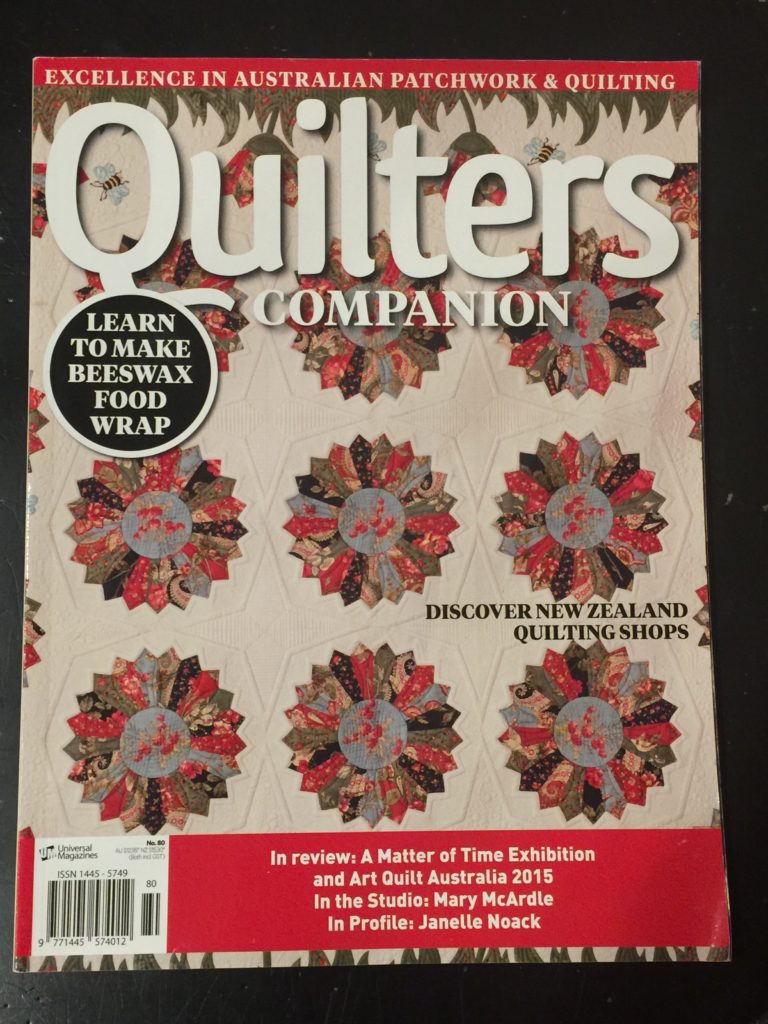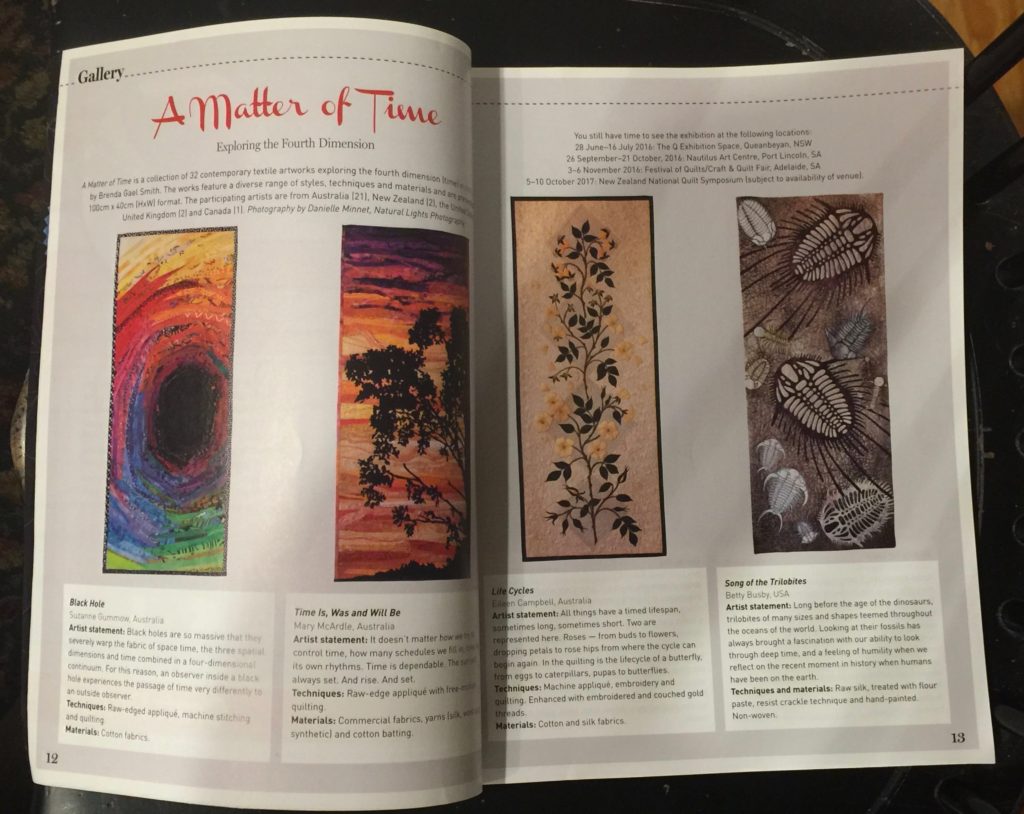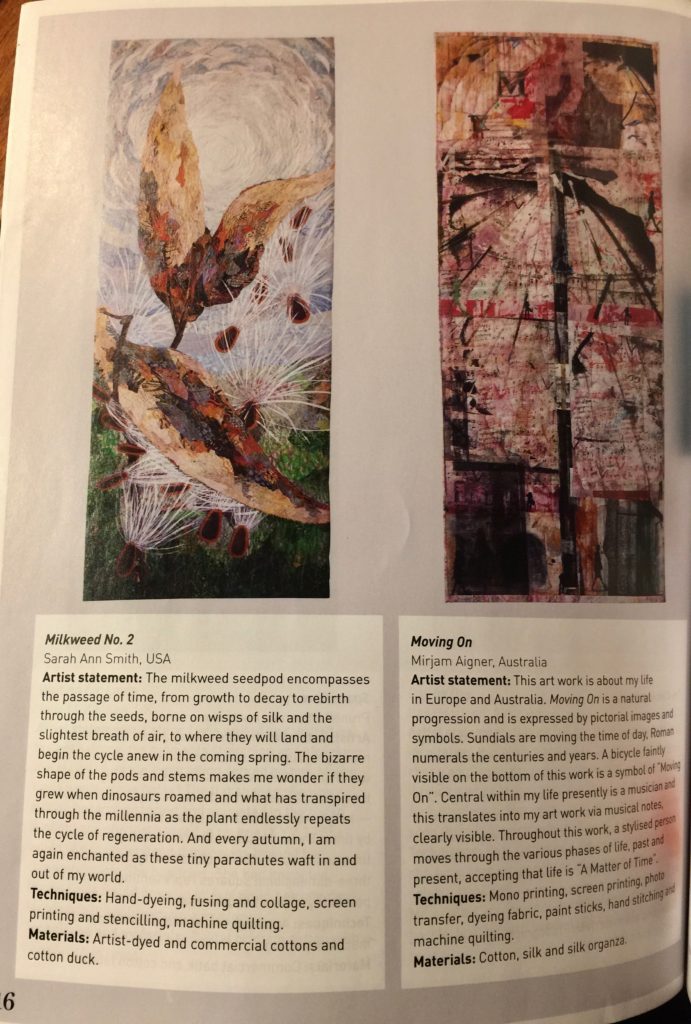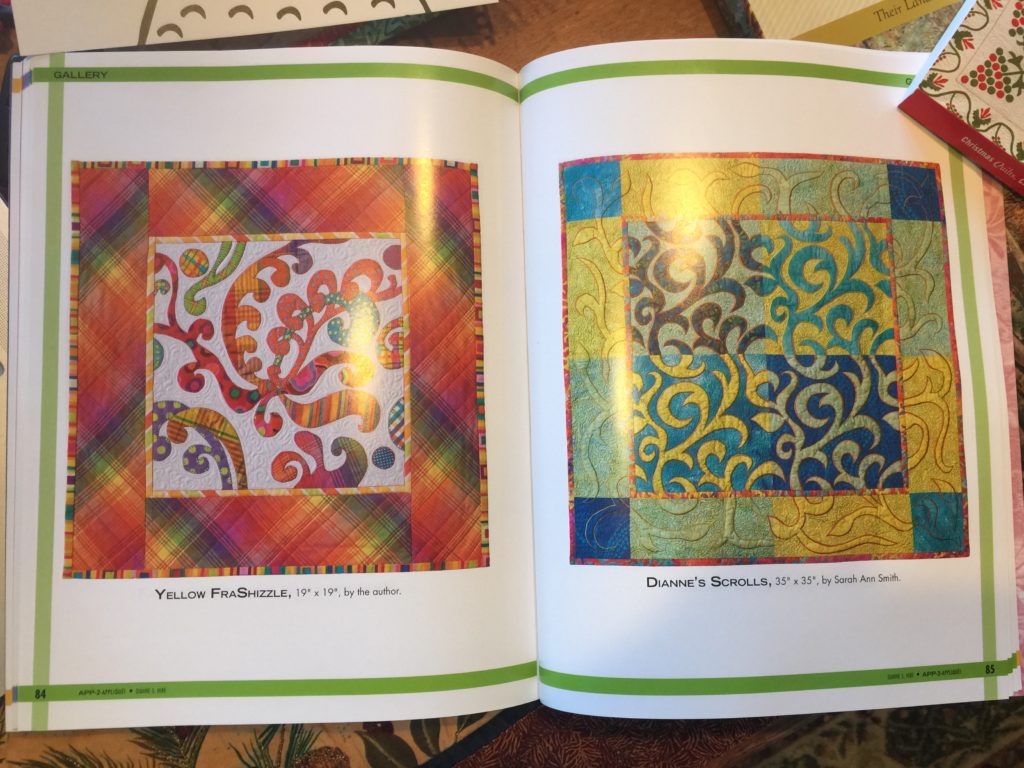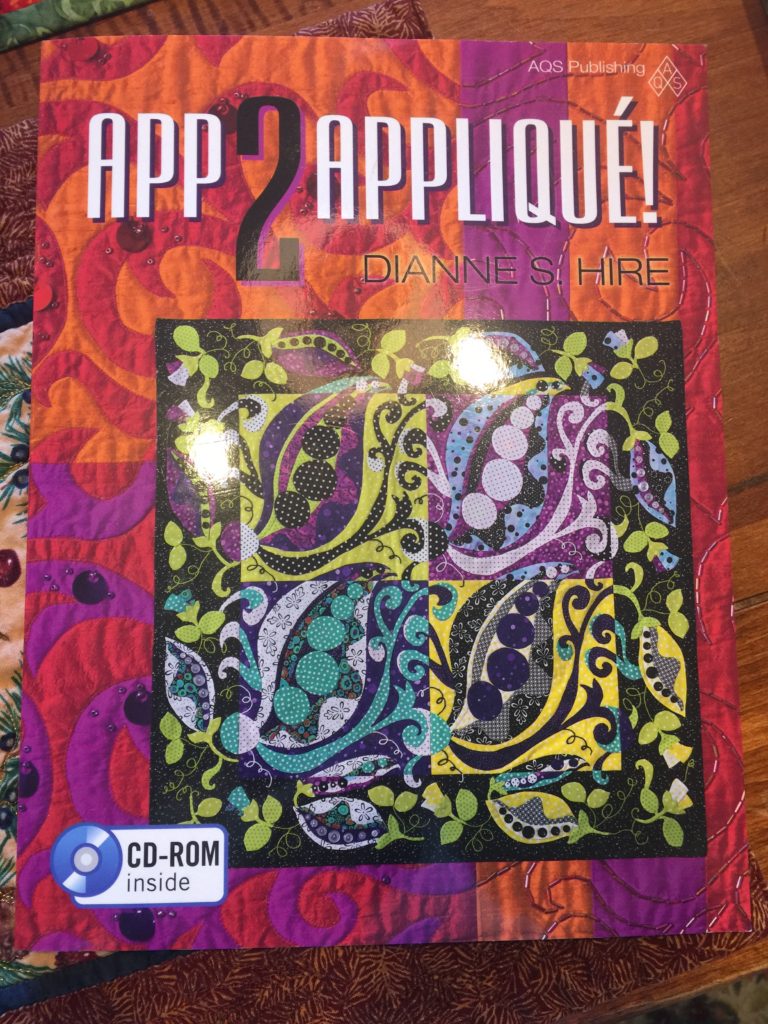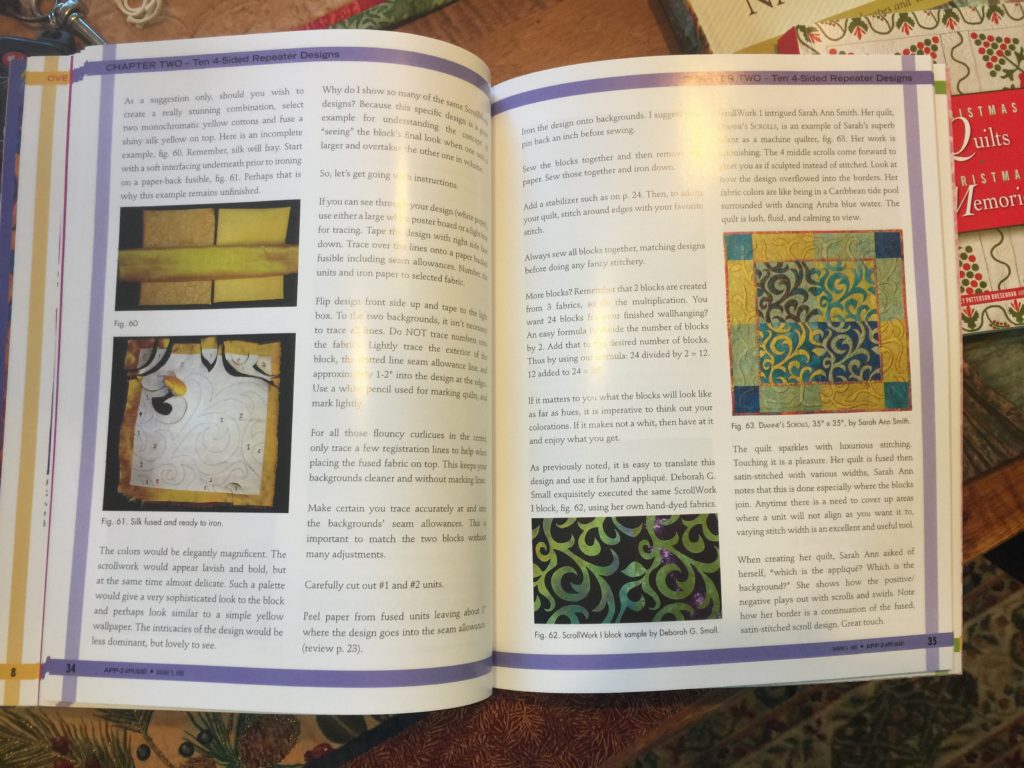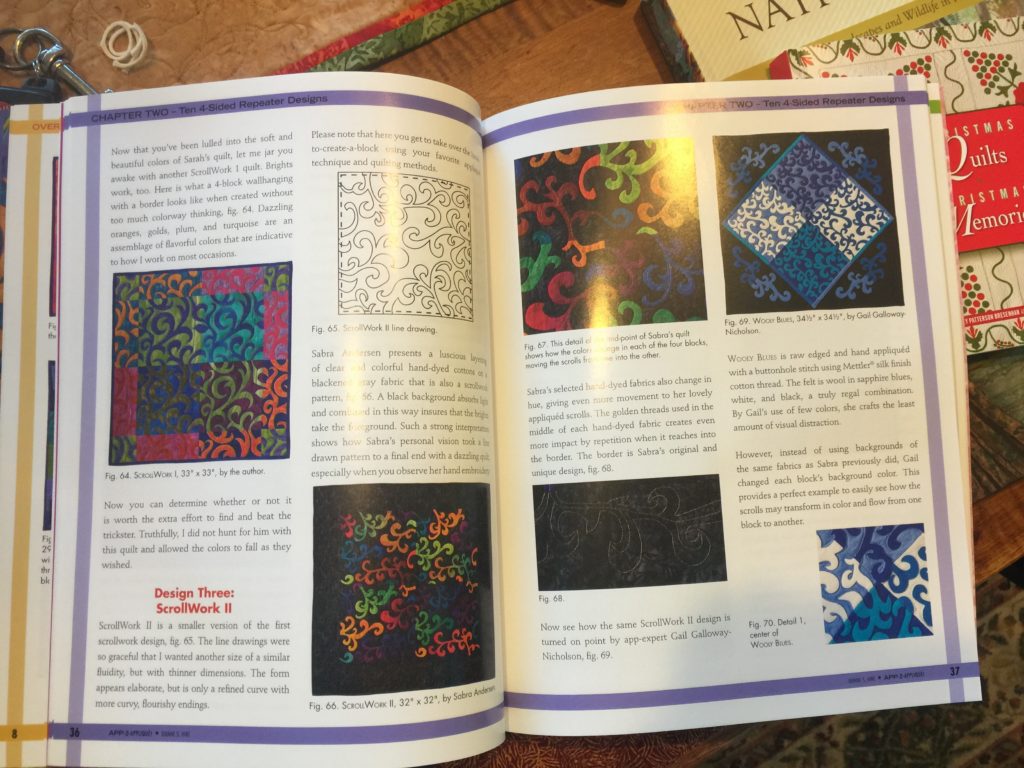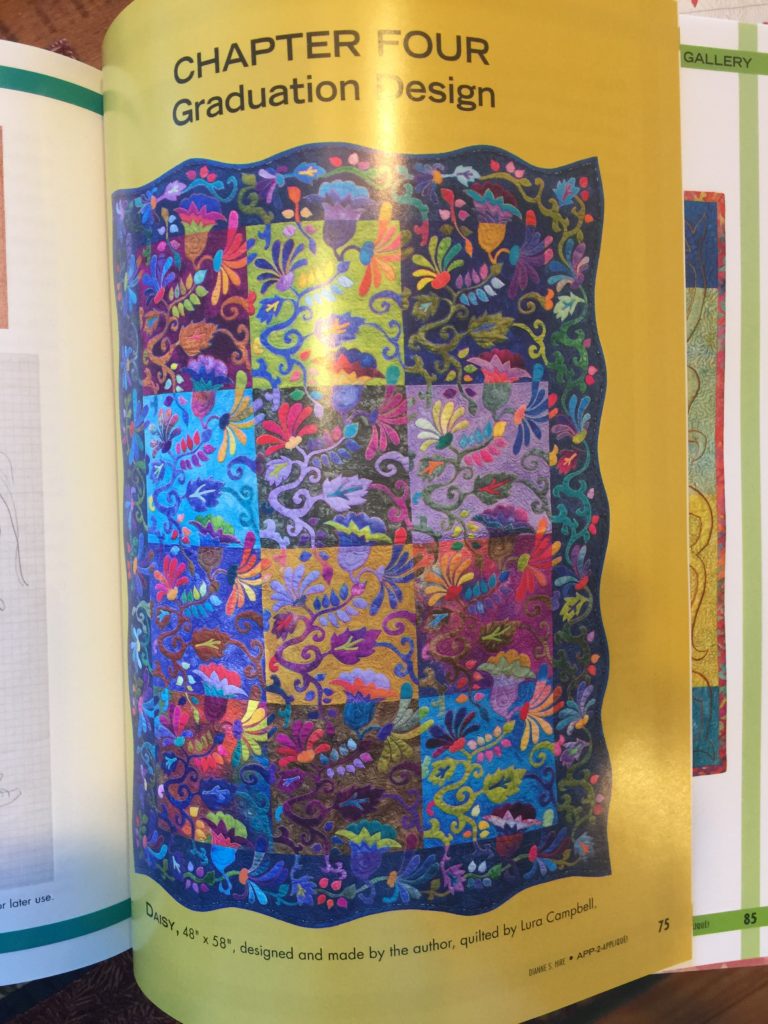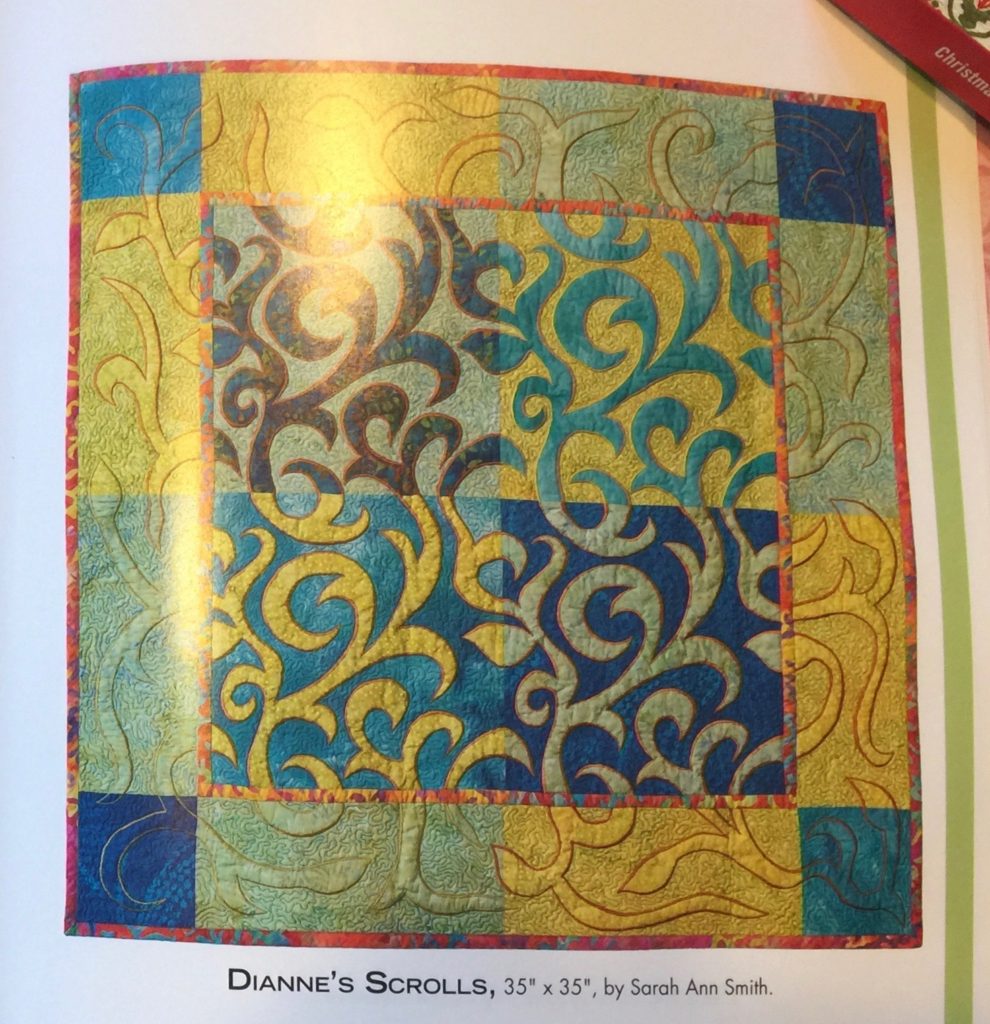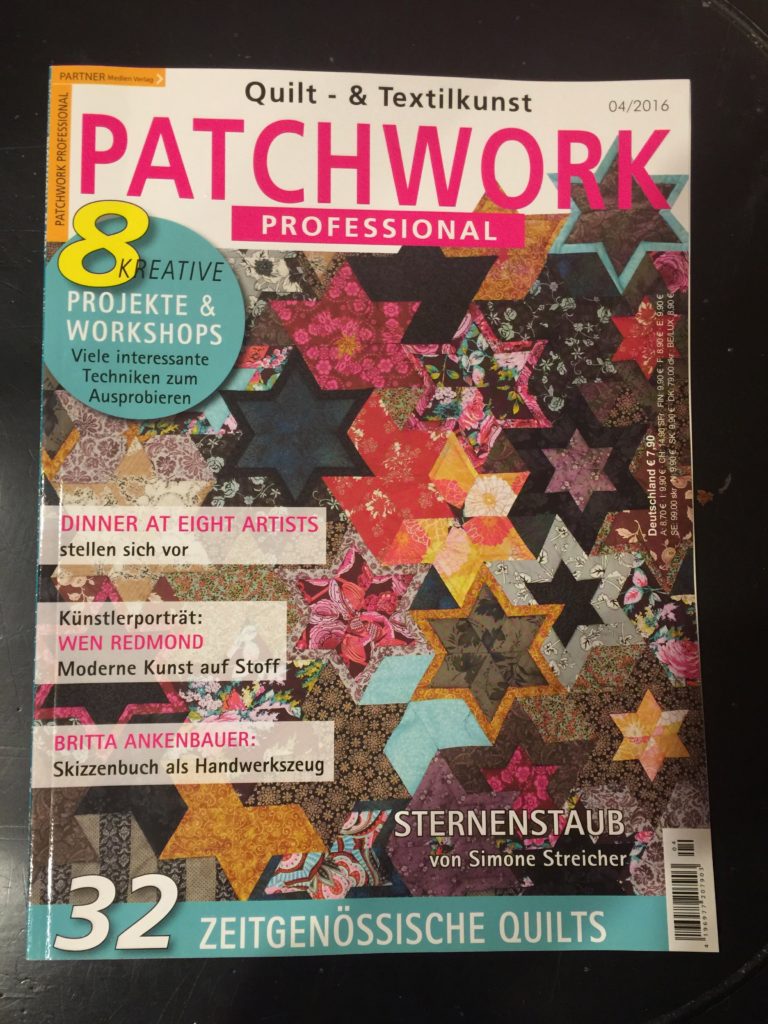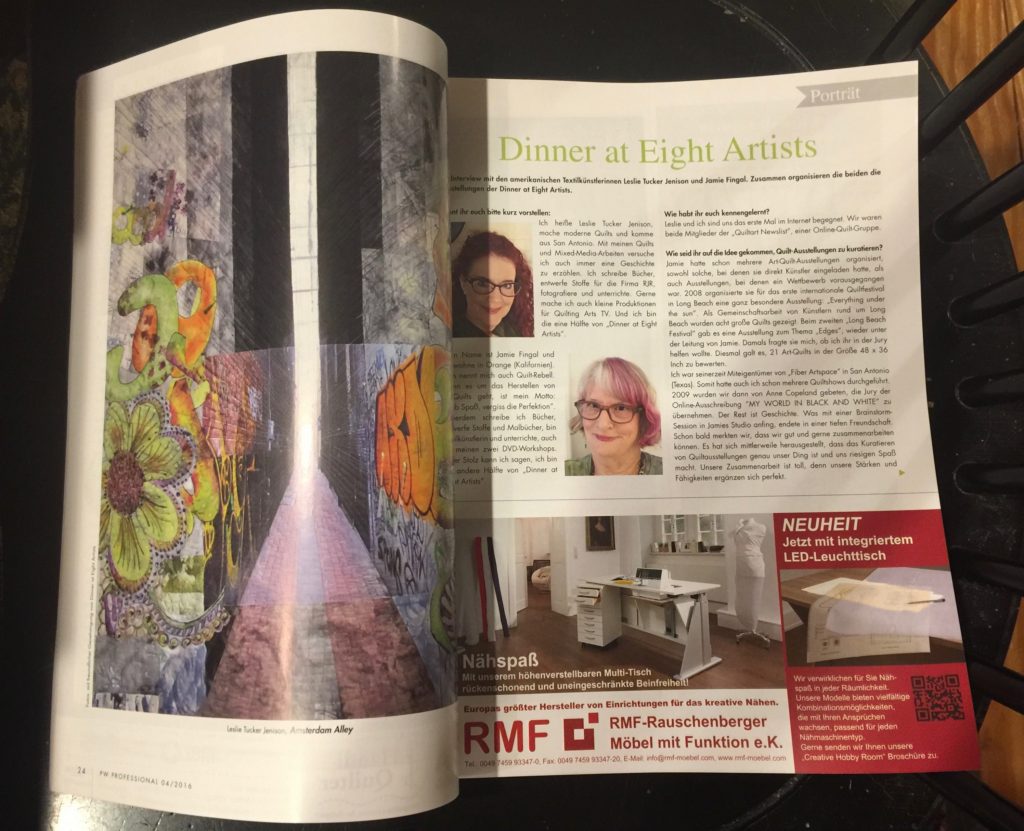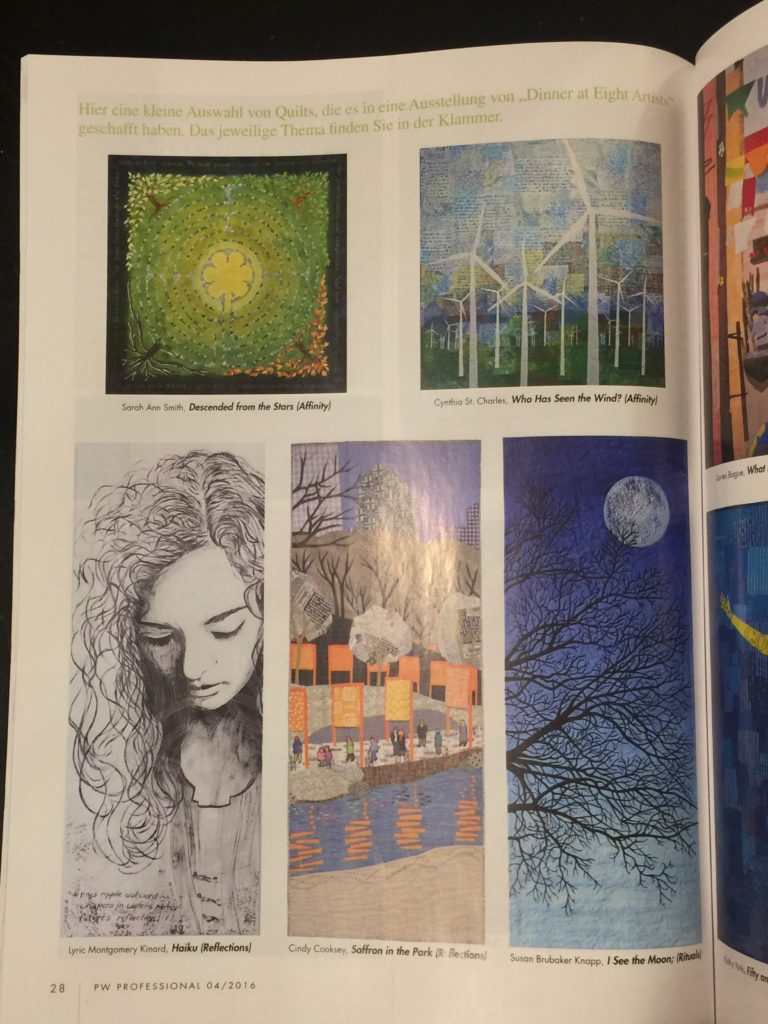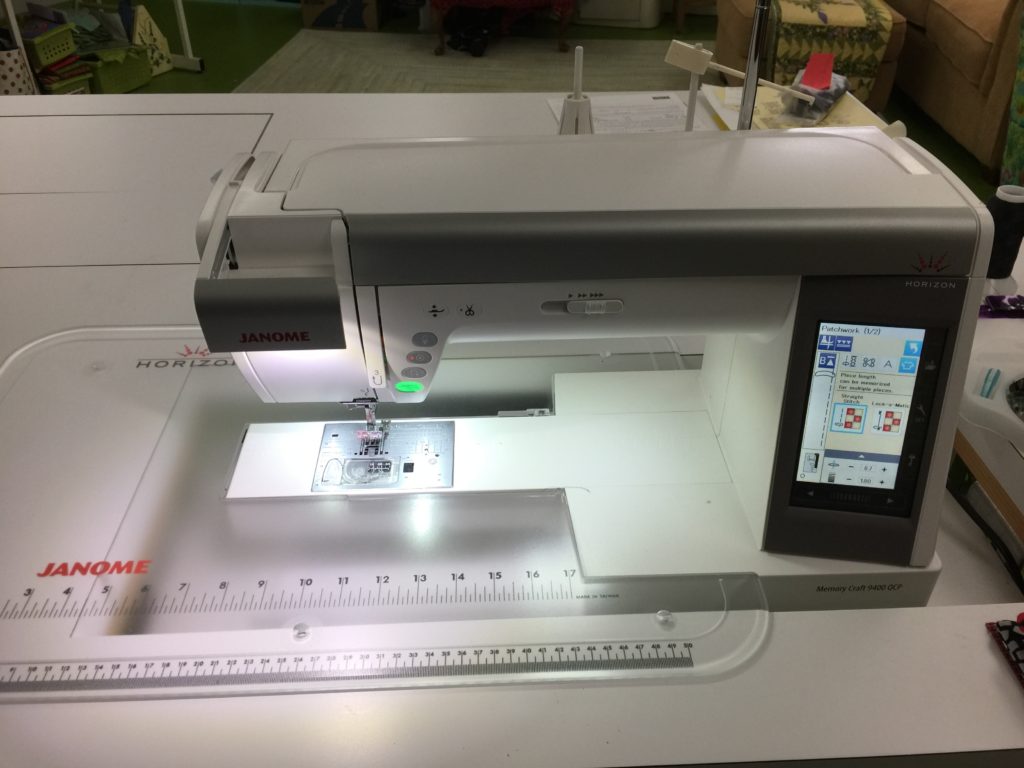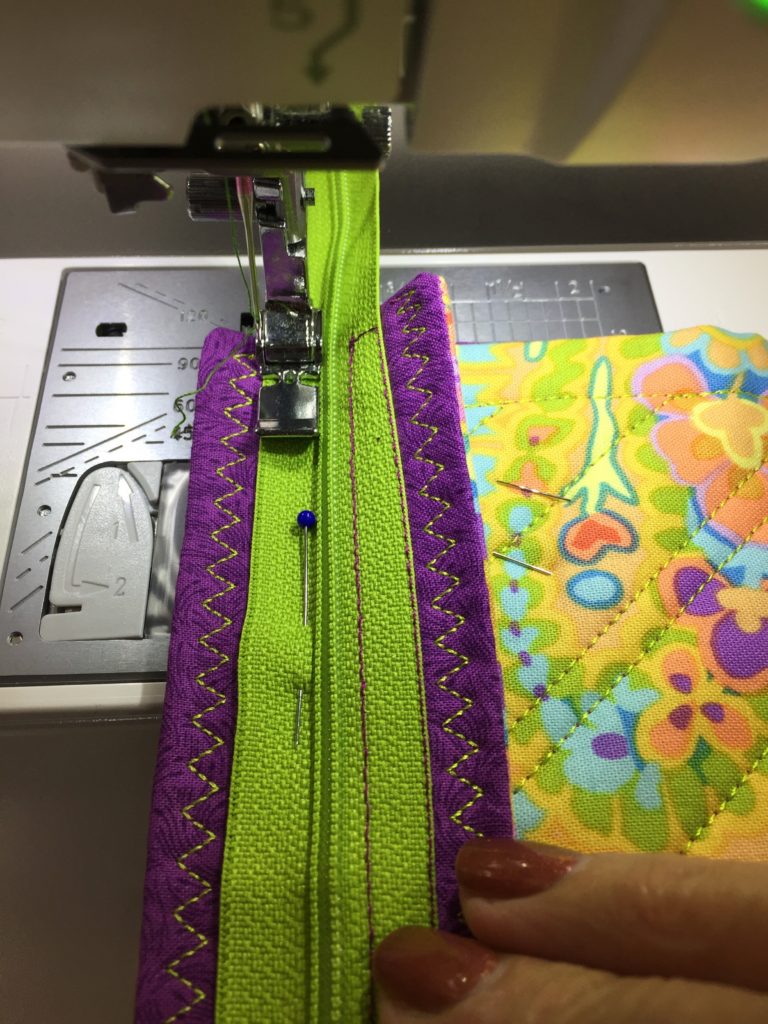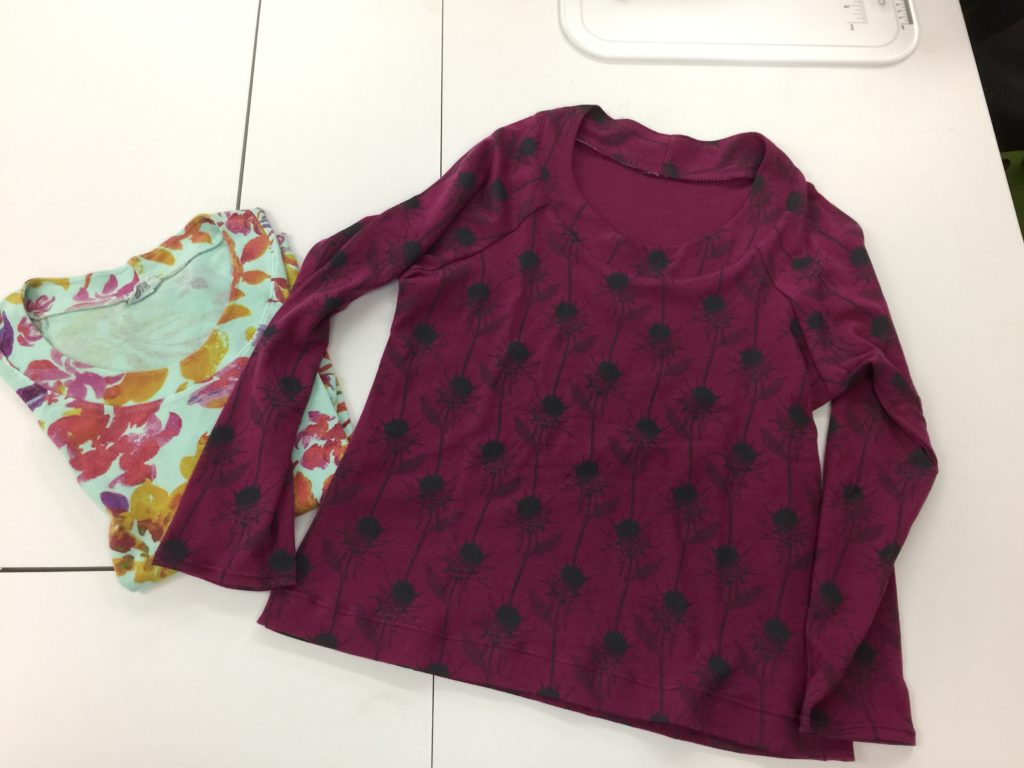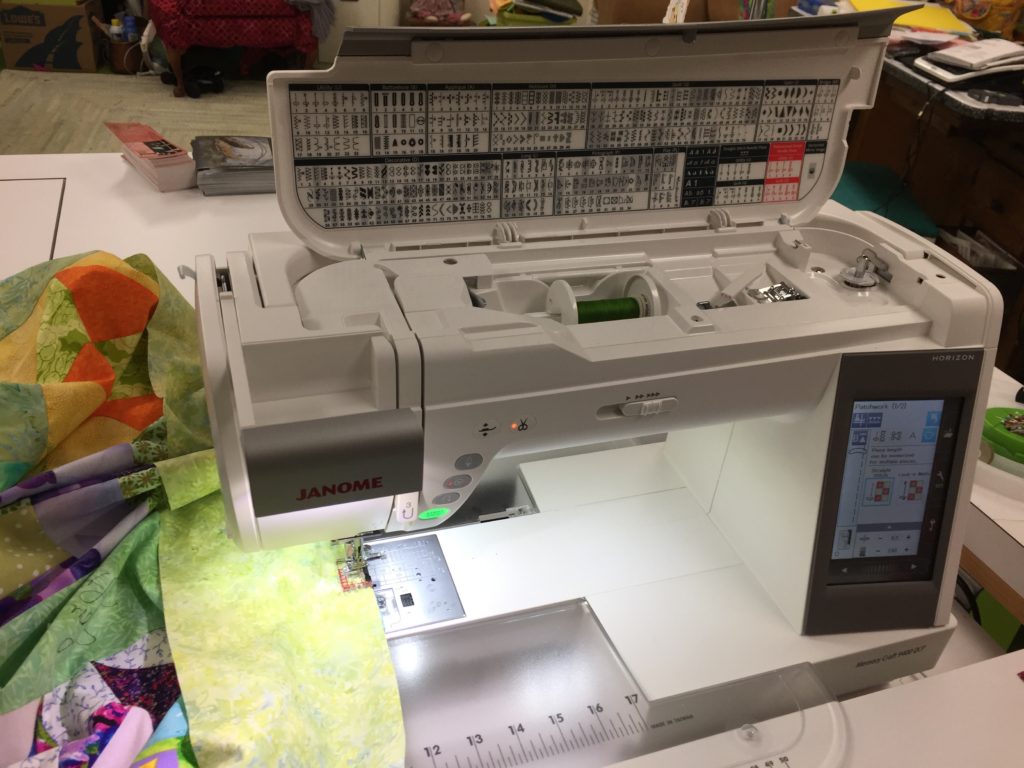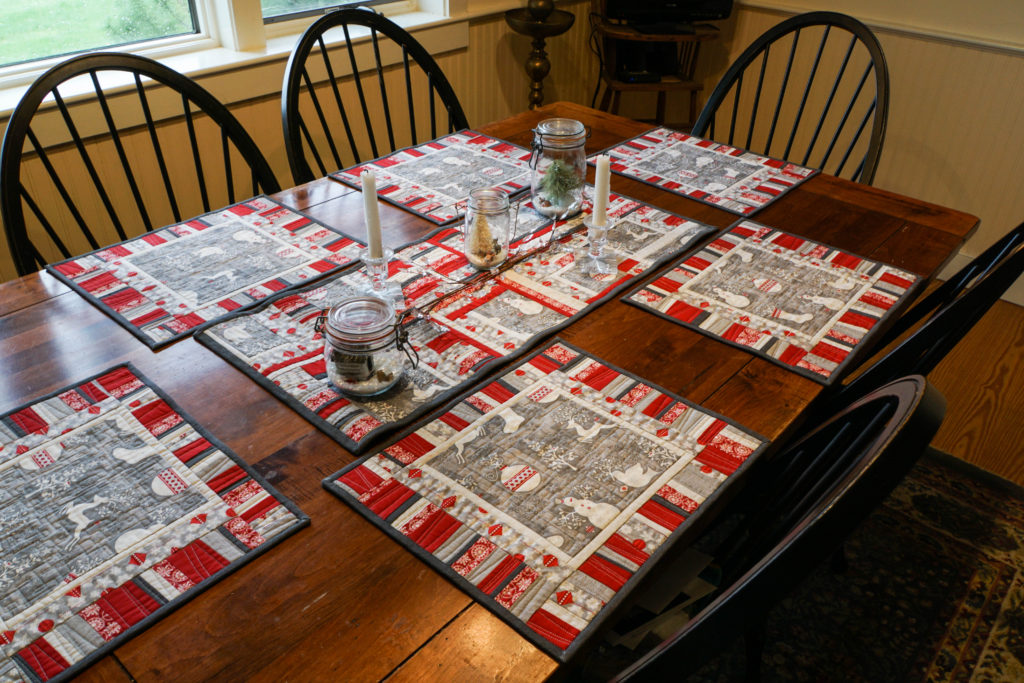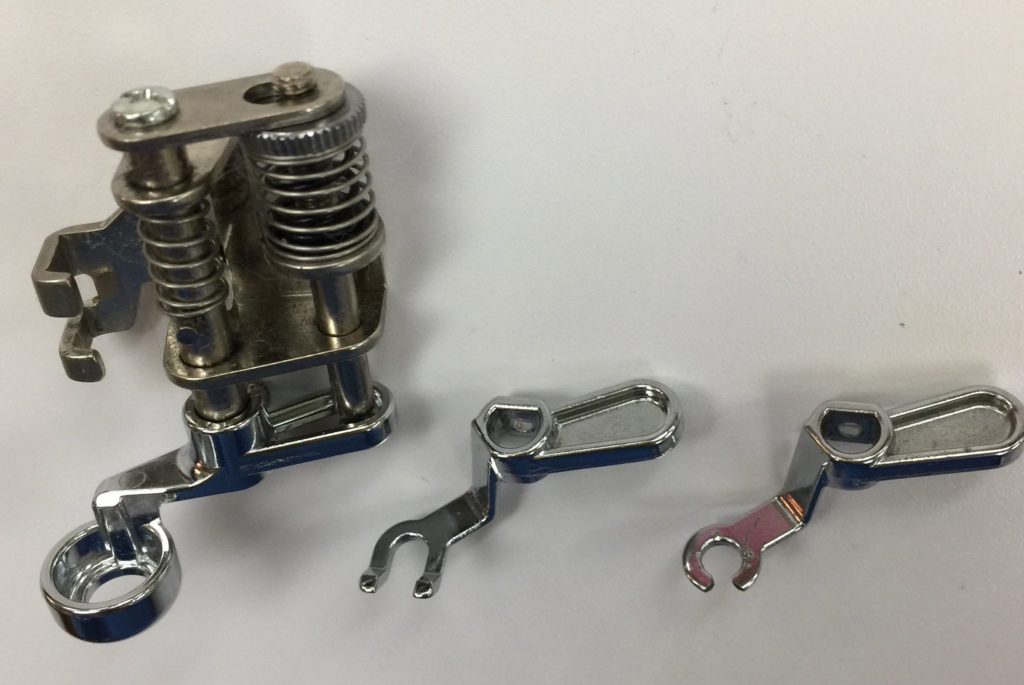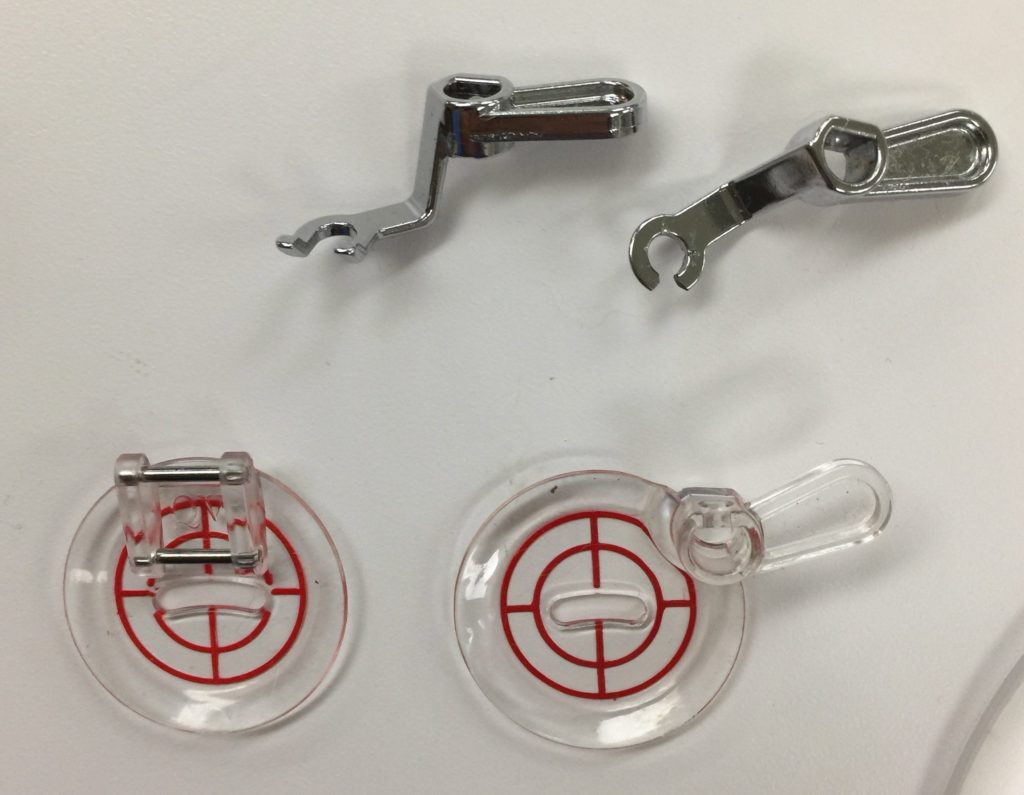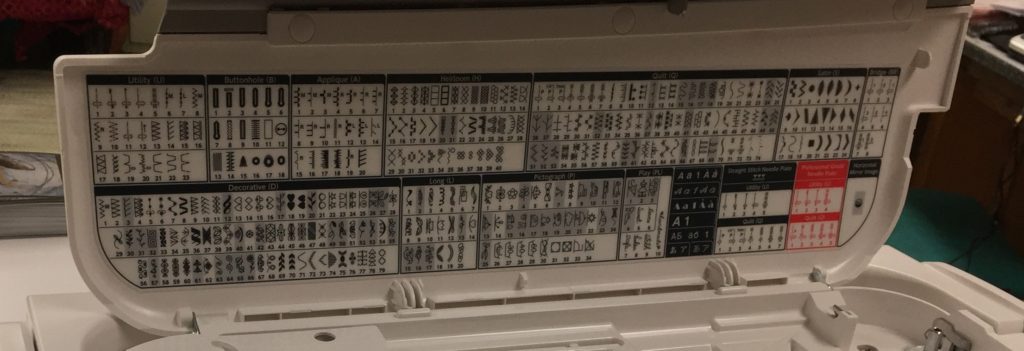2016 was a very good year for me, including being published in books and magazines. It was also a very hectic year and I have neglected my blog and sharing my news, so I’m going to get caught up this week and next, at least on the published works. One of the delights of the year was FINALLY being able to share a small quilt I made some time ago for an exhibit and book to celebrate the centennial of the founding of the US National Parks, website here.
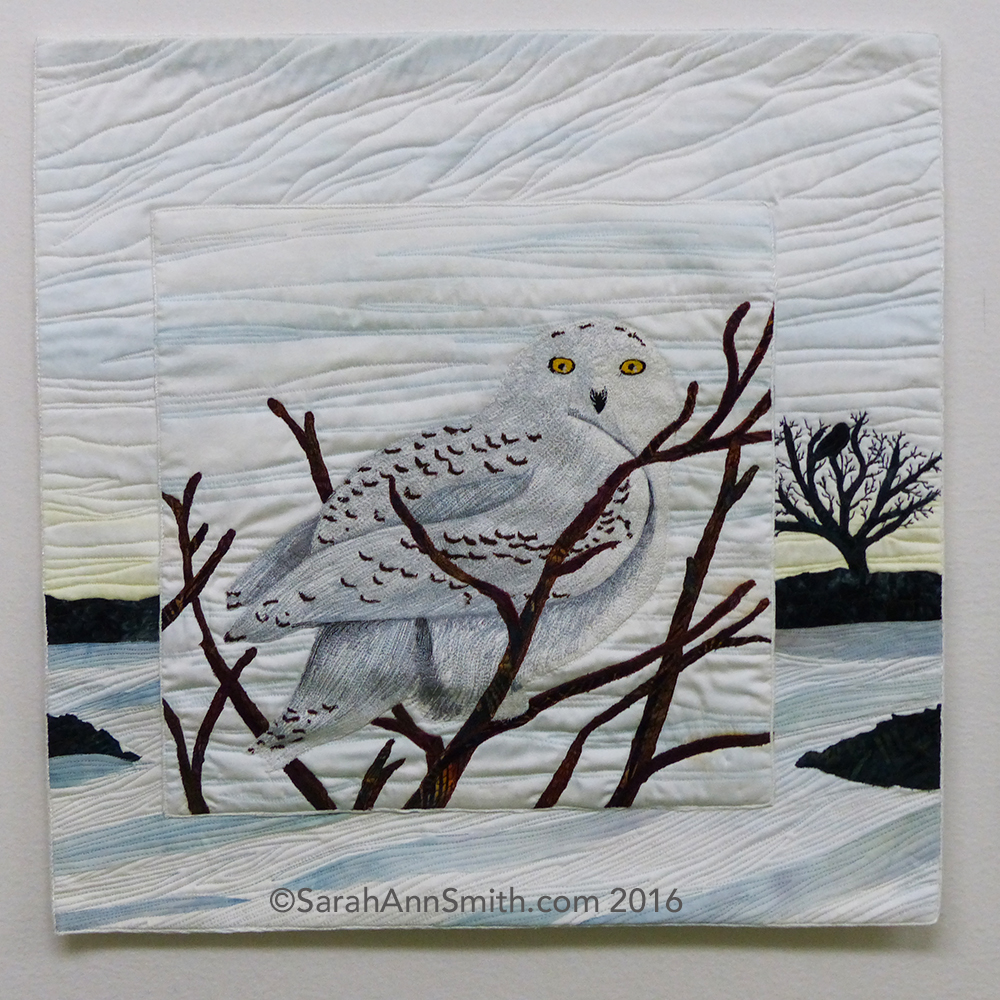
Snowy Owl by Sarah Ann Smith, ©2015/2016
Part of the exhibit debuted at International Quilt Festival in late 2015, but the book was not released until Spring 2016, so we were asked not to share photos online. For once, since my contribution was for Acadia National Park, I was not alphabetically challenged (with a name like Sarah Smith, I’m at the end no matter whether lists are done by first or last name).
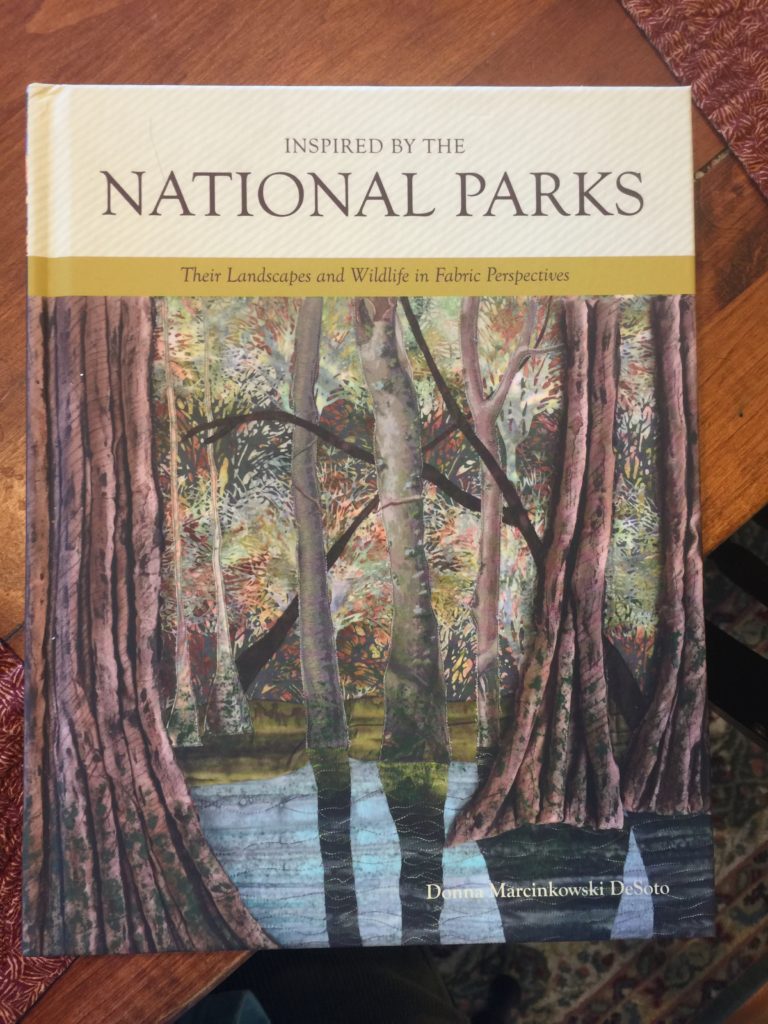
Inspired by the National Parks, by Donna M. DeSoto. You can visit the exhibit website here and purchase the book here.
There were to be three categories of quilts: Landscape, Flora and Fauna. The landscape quilt is a long vertical or horizontal. The Flora and Fauna quilts are squares. When displayed together, the three works create a square. Subject to availability, those participating got to choose which theme and the subject, as long as someone else hadn’t already chosen. For example, blueberries are very Maine, but they are also part of the scenery in other northern tier states and were already gone. To be blunt, this could have been a disaster. Instead, the work exceeds all expectations and forms the most wonderful whole. I so wish I could see the entire exhibit **in person.**
In the book, Donna has contributions from one of the US Park Rangers working at each of the national parks, writing about the park, along with tidbits of information about each place.
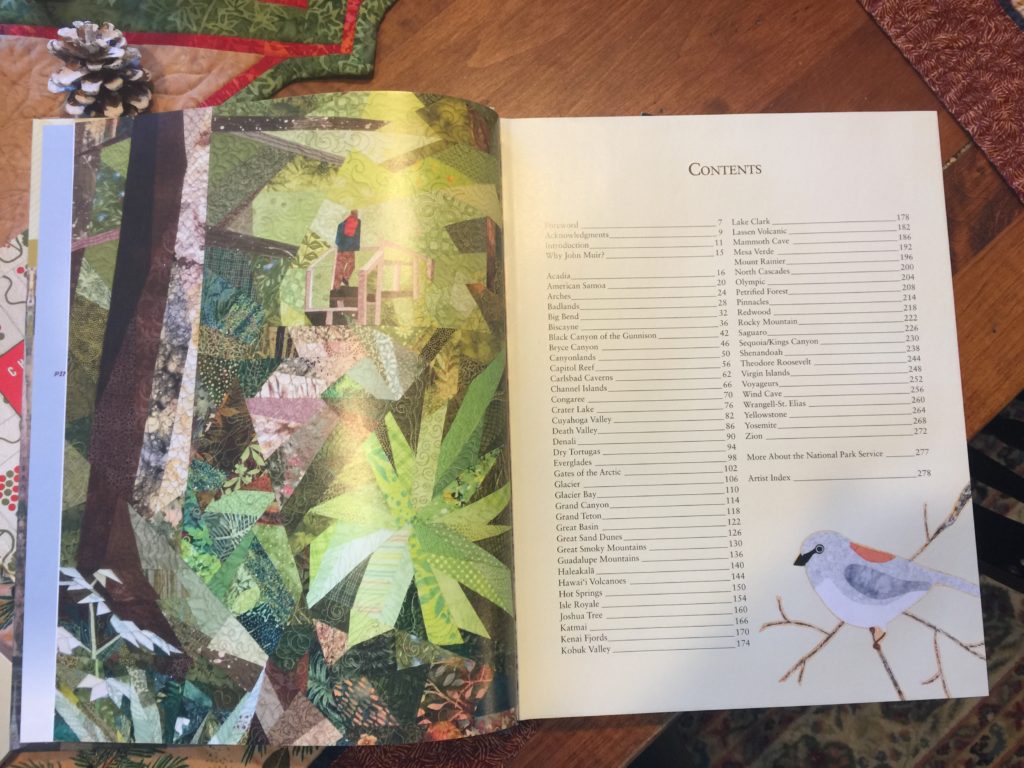
Inspired by the National Parks, Table of Contents
The next photo shows the opening for Acadia National Park, here in Maine:
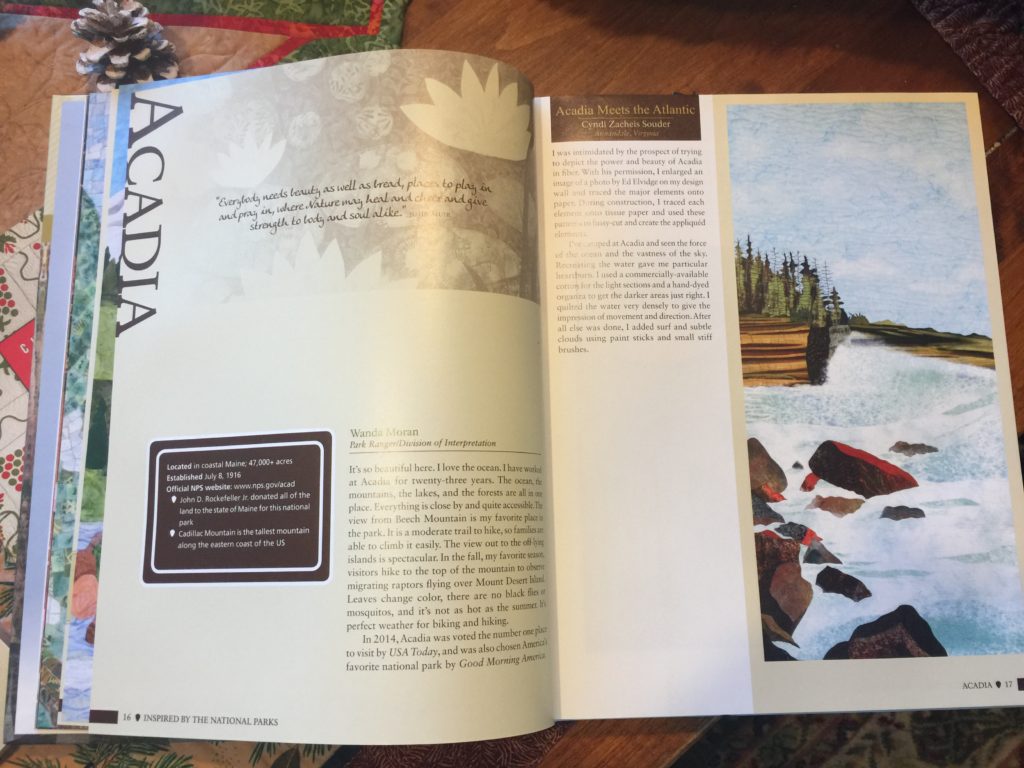
Acadia National Park, opening pages with statement from a park ranger and the landscape quilt, by Cyndi Zacheis Souder.
And the flora and fauna quilts for Acadia, including my snowy owl. They wisely edged the photo with a fine line of black so it wouldn’t “moosh” into the page!
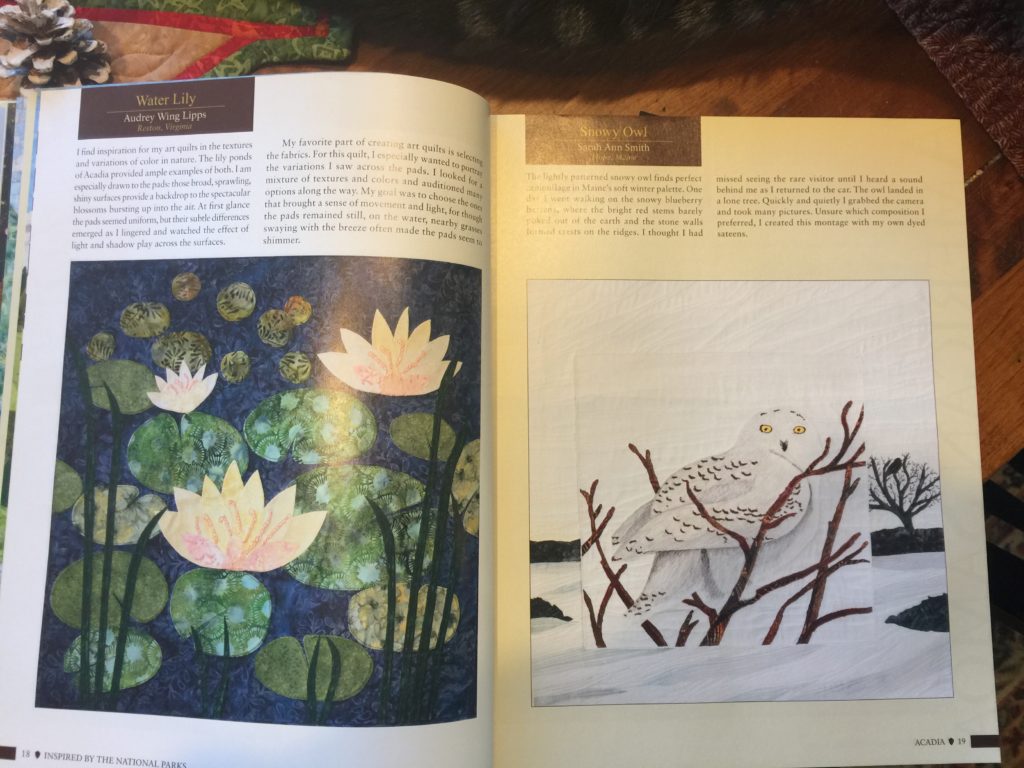
Water Lily by Audrey Wing Lipps and Snowy Owl by me
A couple years ago, there was an “irruption” of Snowy Owls, meaning they migrated a lot further south than usual, and were relatively easy to spot here in Maine. I added the Snowy Owl to my birder’s “life list” that winter. I went to Clarry Hill in Union, where two or three owls had been spotted. I walked along the path through the blueberry barrens on the bare hilltop, but nothing. As I was about to turn around, I spotted one at a great distance (beyond the no trespassing signs), so I was happy, but no good photos. Then I returned to the car. As I approached the car park, I turned and saw an owl in a tree growing next to a stone wall…camera OUT! Snap! Snap! Snap! Thank heavens for auto-focus.
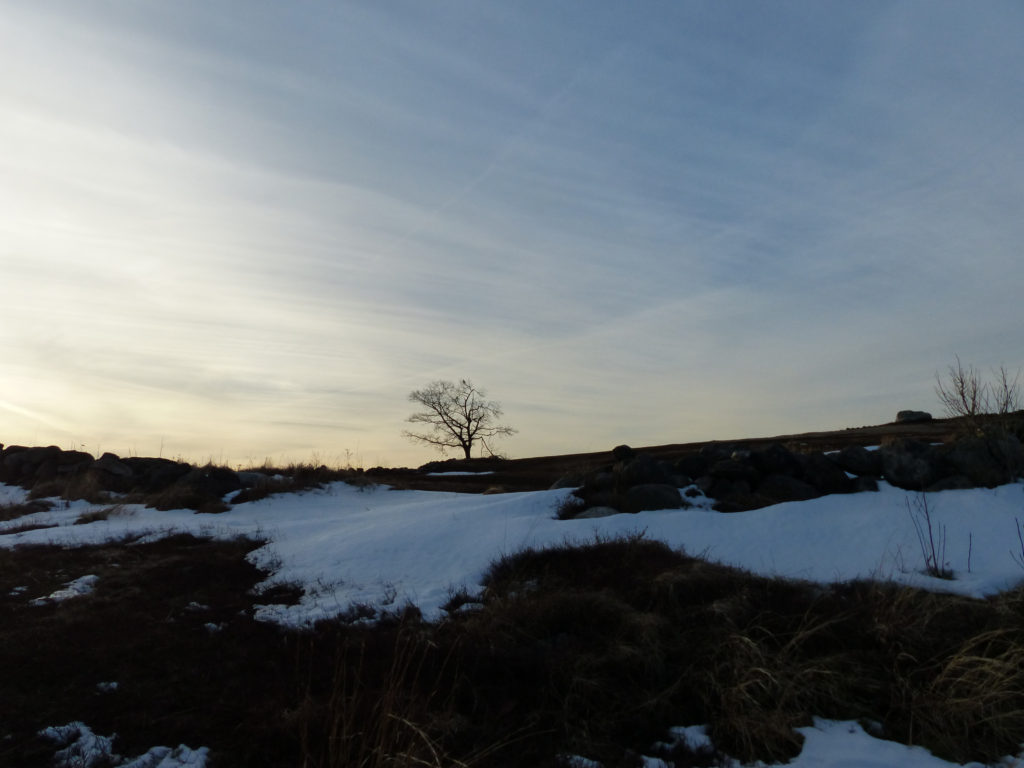
This was about 4 pm, as the sun was beginning to set. There was an owl in the tree on the ridgeline! The owl had followed me down the path and was checking me out!
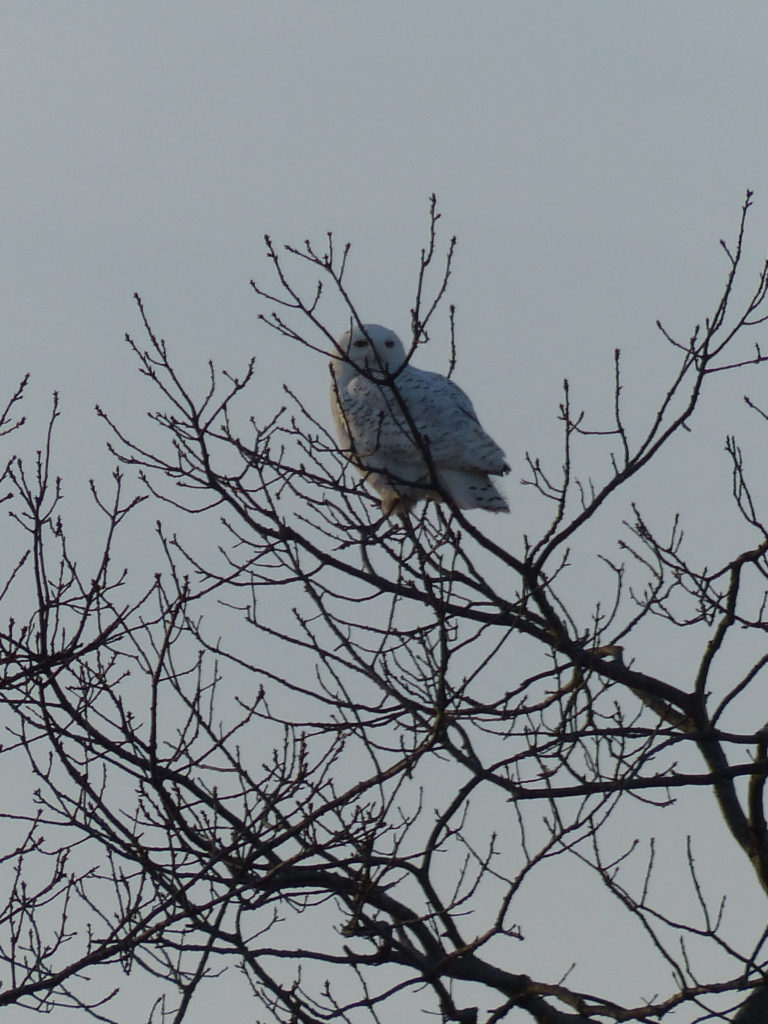
The owl few even closer, so I got some better images. I still get goosebumps looking at this photo! To hear the rustle of an owl’s wings and landing….wow! Hopefully, one of these days Sony will make an even longer focal length zoom for my a6000 mirrorless camera…I am saving already because it WILL be expensive, but worth it! I am inspired by Jeannie Sumjall Ajero’s nature photos she shares on Facebook.
When it came time to make my quilt, I couldn’t decide which view. So I messed around in Photoshop, and thought, well why not BOTH?
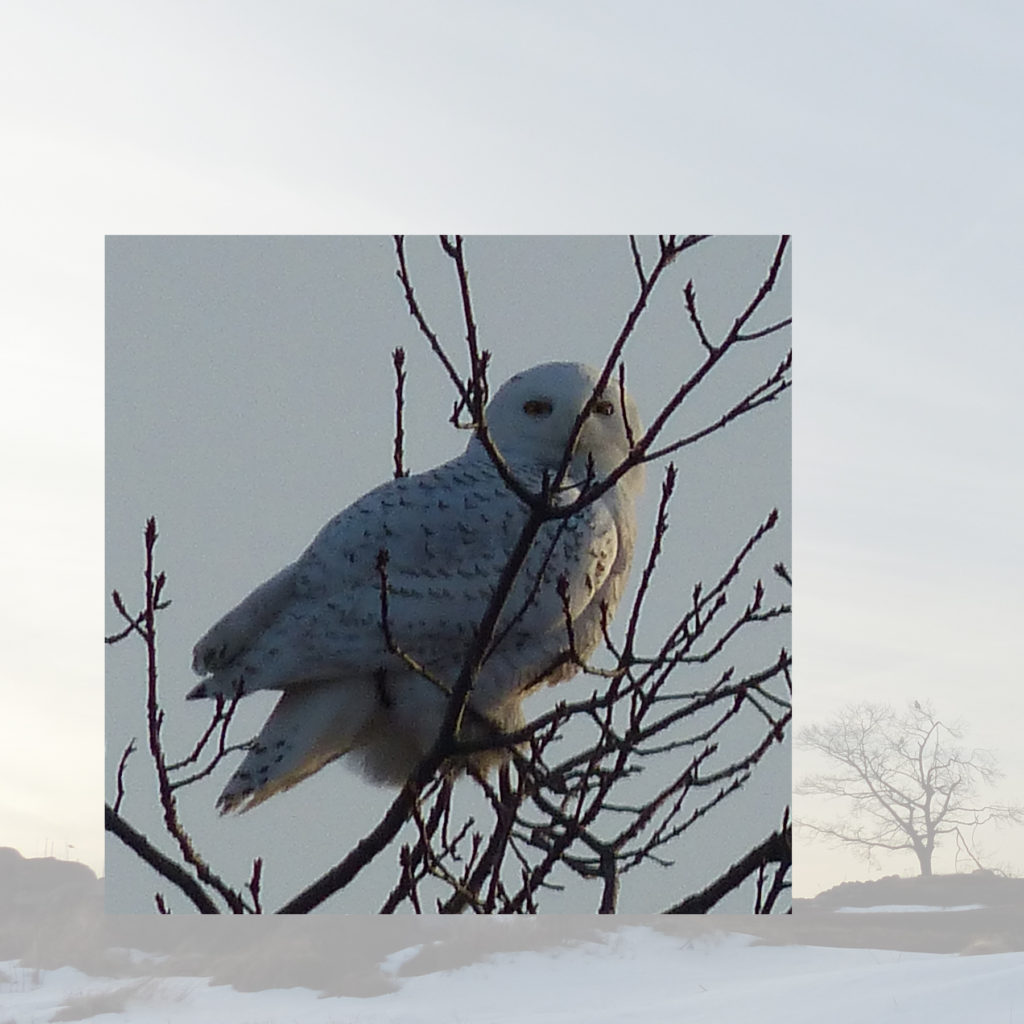
A composite photo image that was my guideline. I obviously adjusted the branches and the placement of the stone wall/tree in the final work.
The subtle winter palette is challenging in terms of finding fabric, so I dyed some cotton sateen. Despite being stingy with the dye, my first attempt there was too much color, so I tried again and got just the pale tones I needed.
I created the bird on white cloth, used stabilizer, and did the very heavy stitching on the bird first, then appliquéd her (probably a female because there is a lot of barring, the brown bits) to the smaller close-up image. I then composed the background quilt and appliqués the smaller one to the larger one. I’ll enjoy having her fly home eventually. Until then, if you get a chance to see this exhibit, DO! And no matter what, the book is a delightful volume. The **Library of Congress** has included the book in a display this year…how amazingly cool is that? Kudos to Donna and all the artists. Exceptionally well done!
You can order the book on Amazon here. What a great thing to do on a long winter’s day!

